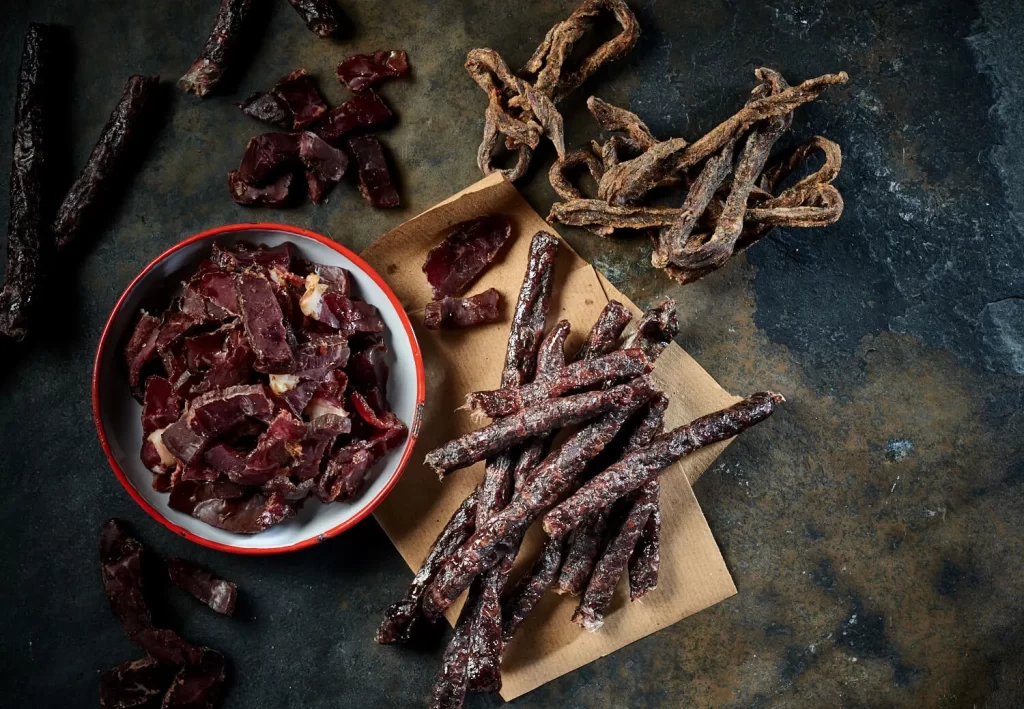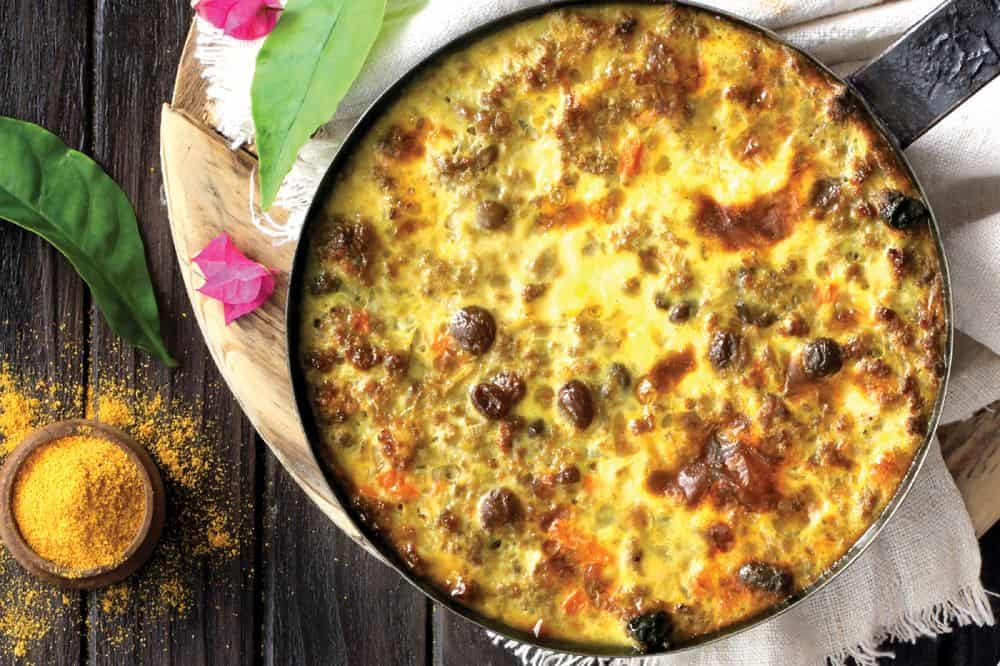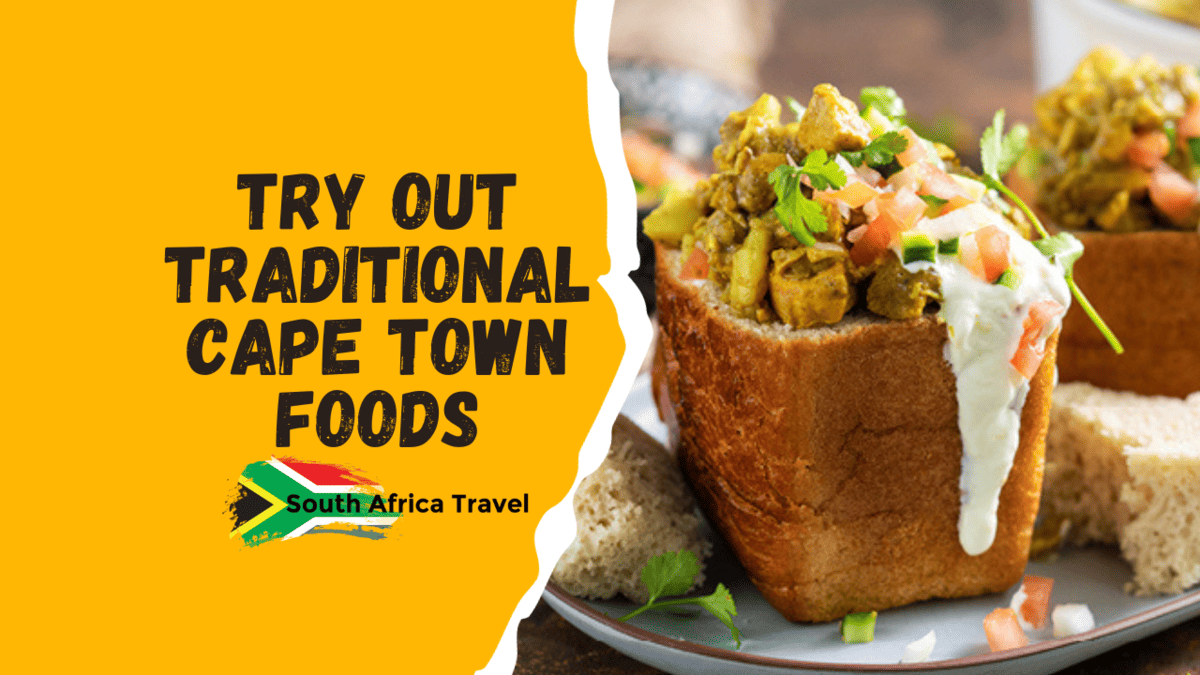#CapeTownCuisine #TraditionalFoods #CulinaryExploration #LocalFlavors #CapeTownDishes#CapeMalayCurry #CapeMalayDishes #CapeTownSeafood #GatsbySandwich
When it comes to exploring a city’s culture and heritage, one cannot overlook the significance of its traditional food.
Cape Town, the vibrant city of South Africa, is known for its rich culinary heritage and diverse flavors. From mouth-watering Bobotie to savory Cape Malay curry, this city is a culinary paradise for food enthusiasts.
Join us as we delve into the world of traditional Cape Town foods, their origins, and the unique experiences they offer.
Get ready to tantalize your taste buds and embark on a culinary journey like no other.
Savoring the Flavors of Cape Town: A Culinary Adventure
Welcome, fellow food enthusiasts, to the vibrant culinary scene of Cape Town!
Nestled at the southern tip of Africa, this city is not just famous for its breathtaking landscapes but also for its mouthwatering traditional cuisine.
So, grab your fork and knife and join us on a delectable journey as we explore the delectable dishes that define Cape Town’s rich gastronomic heritage.
Cape Town, affectionately known as the Mother City, is a melting pot of cultures, each contributing its own unique flavors and traditions to the local food scene.
From the Cape Malay influence to indigenous ingredients and European culinary techniques, Cape Town’s cuisine is as diverse as its people.
In this article, we’ll be your culinary guides, introducing you to the must-try dishes that will leave your taste buds dancing with joy.
Whether you’re a seafood lover, a fan of hearty stews, or simply curious to explore new flavors, Cape Town has something to satisfy every palate.
So, let’s embark on this gastronomic adventure, where we’ll explore the bustling markets, cozy eateries, and charming street food stalls, all while sharing stories and insights about the history and culture that make these dishes so special.
Get ready to tantalize your taste buds as we take you on a journey to discover the traditional Cape Town foods that have been bringing people together for generations. Hungry? Let’s dive right in!
To learn more about The Best Restaurants in Cape Town, visit here.
Cape Malay cuisine

When in Cape Town, one of the best ways to immerse yourself in the local culture is through its diverse and delicious food. Traditional Cape Town foods offer a unique blend of flavors influenced by a variety of cultures, including Cape Malay cuisine. Here are three must-try dishes that will take your taste buds on a culinary journey.
Bobotie: A Traditional Cape Malay Dish
Bobotie is considered the national dish of South Africa and is a culinary delight that should not be missed when visiting Cape Town. This flavorful dish consists of spiced minced meat, usually beef or lamb, mixed with dried fruit, onions, and a host of aromatic spices.
Topped with a golden egg-based custard and baked to perfection, bobotie offers a harmonious blend of sweet and savory flavors. It is often served with yellow rice and chutney, creating a symphony of taste and textures.
Denningvleis: A Tender and Flavorful Lamb Stew
Another traditional Cape Malay dish that is a must-try is denningvleis. This lamb stew is slow-cooked to perfection, resulting in tender and succulent meat that practically melts in your mouth.
The meat is marinated in a blend of aromatic spices such as cloves, cinnamon, and coriander, giving it a rich and complex flavor. Denningvleis is typically enjoyed with fluffy rice or freshly baked bread, allowing you to savor every morsel of this comforting and hearty dish.
Koeksisters: A Deep-Fried Sweet Delight
No meal is complete without a sweet treat, and in Cape Town, that treat is koeksisters. These syrup-soaked pastries are a beloved South African dessert that originated in Cape Malay cuisine.
Made from twisted strands of dough that are deep-fried until golden brown, koeksisters are then soaked in a sticky and sweet syrup made from honey and spices. The result is a mouthwatering combination of a crunchy exterior and a soft, syrup-infused interior, making it the perfect indulgence.
From the tantalizing flavors of bobotie to the comforting richness of denningvleis and the sweet delights of koeksisters, exploring traditional Cape Town foods is a culinary adventure that should not be missed.
So, the next time you find yourself in this vibrant city, be sure to taste the incredible flavors that Cape Malay cuisine has to offer.
Gatsby Sandwich

Origins of the Gatsby Sandwich
South Africa’s cuisine is a melting pot of flavors, influenced by a rich blend of cultures. One iconic dish that has become a beloved street food in Cape Town is the Gatsby sandwich. Originating in the 1970s, the Gatsby is believed to have been created in the Cape Flats, a populous residential area. The sandwich quickly gained popularity due to its generous portions and affordability, making it a favorite among locals looking for a satisfying meal on a budget.
Classic Fillings and Ingredients
The Gatsby sandwich is a hearty combination of flavors and textures. It typically consists of a long roll, often a Portuguese roll, filled with a variety of ingredients. The classic Gatsby includes hot chips (fries), slap chips (thick-cut potato chips), and a choice of meat, such as steak, polony (a type of processed meat), or boerewors (South African sausage).
Additional fillings may include barbeque sauce, Russian sauce, atchar (spicy pickled vegetables), and salad ingredients like lettuce, tomato, and onion.
Variations and Modern Twists
Over the years, the Gatsby has evolved, and different variations have emerged. Some modern twists include vegetarian options with fillings like grilled vegetables or falafel. Some innovative Gatsby makers have added ingredients like fried eggs, cheese, peri-peri sauce, or even seafood such as calamari or prawns. These variations reflect the multicultural nature of Cape Town and the creativity of its food scene.
Whether you’re a local or a tourist, trying a Gatsby sandwich is a must-do when visiting Cape Town. The combination of flavors and textures, along with the generous portions, make it a filling and satisfying meal. It’s an experience that captures the essence of Cape Town’s vibrant food culture and is a delicious representation of the city’s diverse culinary heritage.
So, the next time you find yourself in Cape Town, be sure to seek out a Gatsby sandwich and indulge in this iconic local delicacy.
Here’s a table summarizing the key points of the Gatsby sandwich:
| Key Points | Explanation |
|---|---|
| Origins of the Gatsby Sandwich | Believed to have originated in the Cape Flats, Cape Town, in the 1970s, it was popularized as an affordable and filling street food option. |
| Classic Fillings and Ingredients | Usually served on a long roll, often a Portuguese roll, it features hot chips, slap chips, and a choice of meat like steak, polony, or boerewors. Additional fillings include barbeque sauce, Russian sauce, atchar, and salad ingredients like lettuce, tomato, and onion. |
| Variations and Modern Twists | Modern variations include vegetarian options with grilled vegetables or falafel. Additional ingredients like fried eggs, cheese, peri-peri sauce, calamari, or prawns have been added by innovative Gatsby makers. Reflects the multicultural nature of Cape Town and its diverse culinary scene. |
| Experience and Importance of Trying the Gatsby | Trying a Gatsby sandwich in Cape Town is a must-do to experience the city’s vibrant food culture. Generous portions and a combination of flavors and textures make it a filling and satisfying meal. Represents Cape Town’s culinary heritage and the multicultural influences that shape the city’s cuisine. |
Biltong and Droëwors

What is Biltong?
Biltong is a popular traditional South African snack that is made from air-dried cured meat. It is typically made from beef, although game meats like venison are also used. The process involves marinating the meat in a mixture of salt, spices, and vinegar and then air-drying it until it reaches its desired texture and flavor. Biltong has a rich and savory taste and is often enjoyed as a snack or added to dishes for an extra burst of flavor.
How Droëwors Differs from Biltong
While biltong and droëwors share similar origins and are both dried meat snacks, there is a slight difference between the two. Droëwors is a type of dried sausage that is made from minced beef or lamb, mixed with spices, and stuffed into a casing.
The sausage is then air-dried until it becomes firm and chewy. Droëwors has a distinctive flavor and is often enjoyed as a snack on its own or paired with cheese and crackers.
Where to Find the Best Biltong and Droëwors
If you’re visiting Cape Town and want to try out these traditional snacks, you’re in luck! There are several places where you can find the best biltong and droëwors in the city. Here are a few recommendations:
- The Biltong Shop: Located in the heart of Cape Town, this shop offers a wide variety of biltong and droëwors flavors, including traditional options and unique flavors like peri-peri and smoked.
- Charly’s Bakery: Known for its delicious cakes and pastries, Charly’s Bakery also offers a selection of biltong and droëwors. It’s a great place to try out these snacks while indulging your sweet tooth.
- Bay Harbour Market: This vibrant market in Hout Bay is a must-visit for food lovers. You’ll find stalls selling homemade biltong and droëwors, as well as other local delicacies.
Remember to try out different flavors and varieties to discover your personal favorites. Whether you’re exploring the city or enjoying a picnic by the beach, don’t miss the opportunity to savor these traditional Cape Town foods.
Bunny Chow

Cape Town, South Africa, is known for its rich culinary history and unique flavors. One must-try dish when visiting the city is the famous bunny chow. A Bunny Chow is not an actual rabbit dish but rather a delicious street food made with a hollowed-out loaf of bread filled with curries or stews.
The History of Bunny Chow
The origin of Bunny Chow can be traced back to the Indian community in Durban, South Africa. It is said to have been popularized in the 1940s as a convenient lunch option for workers who needed a portable meal. The name “Bunny Chow” is believed to have derived from the Indian word “baniya,” meaning a merchant or a trader.
Chicken vs. Mutton: Which is the Authentic Choice?
Traditionally, Bunny Chows come in two main flavors: chicken or mutton. Both options are equally delicious and flavorful. The choice between chicken or mutton depends on personal preference. Chicken Bunny Chows have a milder and tangier taste, while mutton Bunny Chows offer a richer, meatier flavor.
Enjoying a Bunny Chow Experience
When enjoying a bunny chow, it is customary to eat it using only your hands. Tear away pieces of the bread bowl and use them to scoop up the generous portions of curry or stew inside. The combination of the spicy curry and the soft bread creates a perfect harmony of flavors and textures.
To experience the best bunny chows in Cape Town, head to local eateries and street food stalls that specialize in this iconic dish. Some popular places include Golden Dish in Cape Town City Centre, The Gatsby in Athlone, and House of Curry in Rondebosch.
So, if you find yourself in Cape Town, make sure to indulge in this unique culinary delight and savor the explosion of flavors that Bunny Chows has to offer.
Cape Town Seafood

When visiting the beautiful city of Cape Town, South Africa, one should not miss out on the opportunity to try out the traditional local foods. Cape Town is renowned for its seafood dishes, which showcase a fusion of flavors influenced by different cultures. Here are three must-try traditional Cape Town seafood dishes:
Cape Malay-Style Fish Curry
The Cape Malay community, descendants of Indonesian and Malaysian slaves brought to the Cape Colony in the 17th and 18th centuries, has contributed significantly to Cape Town’s culinary scene.
The Cape Malay-style fish curry is a perfect representation of their unique flavors. This aromatic curry is made with a blend of spices such as turmeric, cumin, coriander, and ginger, creating a rich and flavorful sauce.
The fish, usually yellowtail or snoek, is cooked in the curry sauce until tender and served with fragrant basmati rice. The combination of spices and flavors in this dish is a true delight for the taste buds.
Peri-Peri Prawns: A Taste of Portuguese Influence
Cape Town has a strong Portuguese influence, thanks to its history as a trading post along the spice route. Peri-peri prawns are a quintessential dish that showcases this influence. Large succulent prawns are marinated in a spicy peri-peri sauce made from African bird’s eye chili, garlic, lemon juice, and olive oil.
The prawns are then grilled to perfection, resulting in a mouthwatering combination of smoky and spicy flavors. This dish is often served with a side of crispy Portuguese-style bread to soak up the delicious sauce.
Snoek Braai: Traditional Fish Barbecue
A snoek braai is a popular Cape Town tradition, especially during the summer months. Snoek, a local fish, is seasoned with salt and pepper and grilled over an open fire. The fish is basted with a mixture of apricot jam and butter while cooking, giving it a sweet and smoky flavor.
The crispy skin and tender flesh make it a favorite among locals and visitors alike. The snoek is often enjoyed with roosterkoek, a traditional bread roll cooked on the braai, and a side of tangy and spicy tomato relish.
Cape Town’s seafood dishes offer a unique culinary experience that combines diverse cultural influences and the freshest ingredients from the surrounding ocean. Trying out these traditional Cape Town seafood dishes will not only tantalize your taste buds but also give you a glimpse into the vibrant food culture of this beautiful city. So, make sure to indulge in these flavors when you visit Cape Town.
Bobotie Pizza

A Fusion of Cape Malay and Italian Cuisines
Get ready for a tastebud adventure with a fusion of Cape Malay and Italian cuisines! Cape Town offers a unique twist on traditional pizza with its famous Bobotie Pizza. This delicious creation combines the rich and flavorful spices of Cape Malay cuisine with the classic cheesy goodness of an Italian pizza.
Ingredients and Preparation of Bobotie Pizza
The key ingredient in this culinary masterpiece is the bobotie, a traditional Cape Malay dish consisting of spiced minced meat baked with an egg-based topping. To make the Bobotie Pizza, the minced meat is prepared with a blend of aromatic spices such as curry powder, turmeric, and cinnamon. The meat is then spread over a pizza base, topped with a generous amount of cheese, and baked until golden and bubbling.
To enhance the flavors, additional toppings such as sliced banana, chutney, and raisins can be added. The sweetness from the fruit and chutney perfectly balances the savory spices of the bobotie, creating a harmonious and mouthwatering combination.
A unique and delicious pizza experience
The Bobotie Pizza offers a one-of-a-kind dining experience that showcases the diversity and creativity of Cape Town’s culinary scene. The blend of flavors in this dish is truly unmatched and will leave you wanting more.
Whether you’re a pizza lover or an adventurous foodie, trying out the Bobotie Pizza should be at the top of your list when visiting Cape Town. Not only will you get to enjoy the traditional flavors of Cape Malay cuisine, but you’ll also get to experience a unique twist on a classic favorite.
So, the next time you find yourself in Cape Town, don’t miss out on the opportunity to savor this delicious fusion of Cape Malay and Italian cuisines. Try the Bobotie Pizza and embark on a culinary journey that will tantalize your taste buds and leave you craving for more.
Conclusion
When visiting Cape Town, exploring the local food scene is an absolute must. From traditional dishes to fusion flavors, the city offers a culinary adventure that will tantalize your taste buds and leave you with unforgettable memories. Whether you are a foodie or simply looking to experience the culture through your taste buds, Cape Town has something for everyone.
Build your own custom food-tasting tour around Cape Town with SouthAfricaTravel.org.

To make the most of your culinary journey in Cape Town, consider booking a food-tasting tour through SouthAfricaTravel.org. They offer customizable tours that allow you to explore the city’s diverse food scene at your own pace.
With local guides, you’ll get insider knowledge on the best local eateries, hidden gems, and traditional cuisines.
Whether you’re interested in sampling the famous Cape Malay cuisine, trying out local street food, or indulging in gourmet delights, SouthAfricaTravel.org can tailor a tour to suit your preferences.
Explore the culinary heritage of the city.
Cape Town’s culinary heritage is a melting pot of cultures, reflecting its diverse history. From traditional Cape Malay dishes like bobotie and koeksisters to the meaty delights of a braai (barbecue), there is a wealth of flavors to discover. Make sure to sample the local seafood, such as snoek or Cape Rock lobster, which are sourced fresh from the Atlantic Ocean.
To truly experience Cape Town’s food scene, be sure to also visit the local markets and food stalls. Places like the Old Biscuit Mill and the V&A Food Market offer a wide array of gourmet treats, street food, and artisanal products. Don’t forget to pair your meals with a glass of South African wine, which is renowned for its quality and variety.
Book your food adventure in Cape Town today.

So if you’re ready to embark on a culinary adventure like no other, book your trip to Cape Town today. Indulge in the flavors of traditional Cape Town foods, explore the city’s culinary heritage, and create memories that will last a lifetime.
Whether you’re a food lover or simply looking to try something new, Cape Town’s food scene will leave you inspired and satisfied.
I hope you enjoyed diving into the rich culinary world of Cape Town and learning about its traditional foods.
Whether you’re a foodie looking to try out new flavors or a traveler planning a trip to Cape Town,
I hope this blog post has sparked your curiosity and provided some valuable insights.
If you have any questions or suggestions, please feel free to leave a comment below. Happy tasting!

